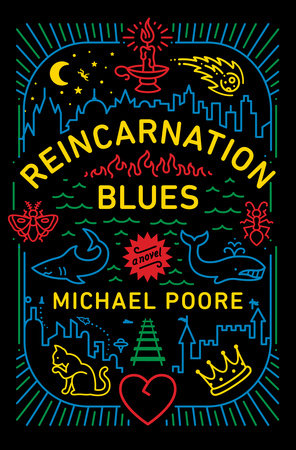The Last Painting by
Sara De Vos by Dominic Smith is a well-crafted example of multilayered
historical fiction. A point-of-view styled narrative, the novel revolves around
three main characters whose lives intersect with a forgery.
It’s Manhattan in 1957, and Marty de Groot, an “old money” patent
attorney whose career seems to have stalled, has a staid life with a comfortable
marriage (despite the fact that the two have drifted apart due to their
inability to conceive children). Meanwhile, in 1957 New Jersey, there’s Ellie,
a young, isolated Australian grad student and sometime art restorer, who can’t
seem to escape the benign disinterest of her parents. Their paths cross when Ellie
is asked by a connection in the art world to produce a “copy” of a painting from
a series of photos only, as she is told its owner couldn’t part with the
original. Ellie, despite intuiting the lie, takes the commission. The work, At
the Edge of a Wood, is by 17th century Dutch painter Sara De Vos.
Ellie, whose stalled dissertation is on Dutch women painters of the period,
becomes enthralled with the painting, the only known ascribed work by De Vos.
Sometime later, Marty notices that a painting that has been
in his family for hundreds of years, has been replaced with a near-perfect
forgery. He hires a private investigator to find the painting and the forger.
His search leads him to Ellie. Deciding to take the investigation into his own
hands, Marty concocts a false identity, Jake Alpert. Under this alias, he
arranges to meet Ellie under the auspices of looking for an art advisor for a
personal collection. The investigation quickly turns into more, as we learn first-hand
from both Marty and Ellie.
Woven into this story are flashes from their future in
Sydney during the year 2000. Ellie is
now a respected professor at Sydney University, with an important role at the
Art Gallery of New South Wales. The gallery is welcoming a few potential works
by Sara de Vos, on lend for an important opening. Soon three pieces of art turn
up, two from the Leiden Museum, At the
Edge of a Wood and an untitled landscape, and one from a wealthy American
private collector, also claiming to be At
the Edge of a Wood. Confronted with her own long ago forgery, Ellie begins
to imagine the unraveling of her carefully crafted career.
As the stories of Marty and Ellie evolve, Sara’s own account
of the painting’s provenance is charted from 1636 to 1637. After losing their
only child to the plague, Sara and Barent de Vos fall on hard times. Penalized
by the Guild of Saint Luke, neither are allowed to make a living by painting,
nor sign any works. Working through her grief in the shadows, Sara produces the
painting at the center of Marty and Ellie’s story. Destitute and desperate, Barent abandons Sara,
and their home and belongings, including At
the Edge of a Wood (purchased by Pieter de Groot), are auctioned off by the guild.
In turns the novel reveals that Sara has been sent by the guild to work
off a debt to Cornelis Groen, a wealthy bachelor in Heemstede. Sara begins to
enjoy her time there, working on a landscape painting of a defunct town left in
ruins by the plague. The work acts a tribute to her own grief and that of a surviving
widow who lost nine children to the outbreak, and refuses to leave the town
behind.
This book is a wonderful piece of historical fiction. The characters
are so well-wrought and likeable that one hardly concerns one’s self with drama
of the forgery until nearly half-way through the book. The audiobook is enacted
perfectly, with just the right accents and tones for the tale. It is currently
available at the Delphi Public Library in hardback as well as the aforementioned
digital audio, via the Overdrive app.
-Jennifer Wilson






























